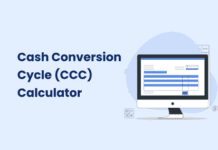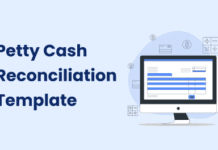Finance teams and accounting departments can quickly become overwhelmed when handling invoices and payments manually. You likely know the challenges that come up, like piles of paperwork, delayed approvals, missed payments, and endless back-and-forth emails. These challenges are more than just inconveniences. They slow down operations, affect vendor relationships, and drain your cash flow.
The P2P process has always been essential for businesses, but managing it well is now more important than ever. The shift to digital operations and increased transaction volumes make it a priority. This trend is clear, with the procurement-to-pay software market projected to reach an impressive USD 15.3 billion by 2032.
Proper P2P management helps ensure accuracy, control, and efficiency. This, in turn, allows companies to handle these growing demands and maintain financial stability. With this in mind, let’s explore the key steps in the procure-to-pay process and how they can free your finance team from the burdens of manual tasks.
What is the Procure-to-Pay (P2P) Cycle?
The procure-to-pay process, also known as purchase-to-pay, is a structured workflow. It covers everything from purchasing goods or services to making payments. This process is essential for finance as it shows how procurement and accounts payable work together for smooth operations.
Companies often automate the procure-to-pay process to improve efficiency and reduce risks. Most businesses rely on low-code business process automation tools to handle this effectively.
Although the specifics can vary, the P2P process typically includes several automated steps such as:
- Creating purchase requisitions
- Asking vendors to share quotes
- Selecting goods and services from an approved vendor
- Creating purchase orders
- Processing and reconciling invoices
- Submitting approved payments
What Are the Steps for an Effective Procure-to-Pay (P2P)?
Procurement leaders choose the most relevant stages of the procure-to-pay process based on the organization’s practices and specific needs. Peakflo’s AI-powered procure-to-pay solution makes a difference, allowing you to effectively customize the workflow to fit your business needs.
Let’s explore the 11 essential steps to enhance your P2P process.
Step 1. Identify Business Needs
The first step in the procure-to-pay process is to identify and define the organization’s requirements. Cross-functional stakeholders help ensure a complete understanding of what is needed. Once a valid need is recognized, the procurement team outlines the main specifications for goods, terms of reference (TOR) for services, and statements of work (SOW).
Step 2. Create Purchase Requisitions
After finalizing the specifications, a formal purchase requisition is created. The requester completes the requisition form, making sure all necessary administrative details are included. These requisitions can cover any type of procurement, including standard purchases, subcontracts, or consignments.
Step 3. Approval of Purchase Requisition
Next, department heads or procurement officers review the submitted purchase requisitions. They either approve or reject the requisition after evaluating its necessity, confirming budget availability, and checking the form’s accuracy. If any information is missing or wrong, the request is returned to the sender for corrections.
Step 4. Create and Send Purchase Quotes to Vendors
After the requisition is approved, procurement teams create and send requests for quotes (RFQs) to potential vendors. This allows the organization to gather pricing and terms for the required goods or services.
Step 5. Evaluate Vendor Quotes
Once the quotes are received, procurement teams evaluate them using a bidding matrix. This process helps select the best vendor based on cost, quality, and delivery timelines.
Step 6. Create a Purchase Order or Spot Buy
A spot buy may be conducted if the requested items are one-time purchases. It may also apply to low-value items or products that fall under unmanaged categories. If not, the procurement team will generate a purchase order (PO) based on the approved requisition.
Step 7. Approval of the Purchase Order
The purchase order is then sent through an approval process to ensure all specifications are accurate and legitimate. Vendors receive approved POs and can choose to approve, reject, or negotiate them. The purchase order becomes a legally binding contract as soon as it is finalized.
Step 8. Receive Goods or Services
After the supplier delivers the ordered goods or services, the buyer inspects them to ensure they meet the contract terms. Then, the buyer creates a goods received note (GRN). The GRN is approved or rejected based on the quality and standards outlined in the purchase order or contract.
Step 9. Invoice Approval
Once the goods receipt is approved, a three-way match is conducted between the purchase order, vendor invoice, and goods receipt. The invoice is authorized and sent to the finance team for payment if everything checks out. Any discrepancies lead to the vendor receiving the invoice back along with a detailed reason for rejection.
Step 10. Vendor Payment
The finance team disburses payments as per the contract terms once the invoice has been approved. Payments can fall into one of the following categories: advance, partial, progress, final, or holdback/retention. Before issuing the payment, any necessary adjustments, like contract changes or financial security reviews, are also considered.
Step 11. Evaluate Vendor Performance
The final step is evaluating the vendor’s performance. This assessment considers factors like quality, delivery timeliness, service, compliance with the contract, responsiveness, and total cost of ownership (TCO). You record any instances of non-performance for future reference.
What is 3-Way Matching in the P2P Process?
Three-way matching is a crucial account payable (AP) process that helps determine whether to pay a vendor’s invoice. Simply put, this entails verifying the invoice with the PO and the goods received note. This ensures that all relevant details, like the quoted order amount and the number of items, are correct.
The documents needed in this process are:
- Purchase Order (PO): This document authorizes the purchase. It specifies the types, quantities, and pricing of products or services that the customer and seller have agreed on. Each PO has a unique number for reference and tracking purposes.
- Goods Received Note: A receiving report confirms that the purchase has been delivered partially or fully.
- Vendor Invoice: This document shows the amount the buyer owes to the vendor. It includes payment details, such as the payment schedule and the invoice number.
Adding Value Through Automation
When integrated with technology, automating the three-way matching process offers numerous benefits. For instance, if the purchase order and delivery details are stored in a central database, the AP team can easily access all the information they need. This allows them to perform three-way matching as soon as they receive the vendor invoice.
When vendors send their invoices electronically into the same system, most invoices can often be instantly matched.
The value of three-way matching extends beyond accuracy. An automated system keeps vendor information. This allows the AP team to track the number of invoices processed from each vendor. This insight can be invaluable for evaluating vendor performance.
What Are the Best Practices For an Effective P2P Process?
To optimize the procure-to-pay process, organizations should move ahead purposefully. Here are six procure-to-pay best practices.
1. Implement Automation and Technology Integration
Adopting technology can significantly optimize your company’s P2P process. Automation tools reduce manual errors, speed up transaction times, and improve visibility throughout the workflow. Organizations can also enhance data management and analysis by adopting integrated procure-to-pay software.
2. Strengthen Vendor Relationship Management
Building strong relationships with vendors and suppliers can lead to better pricing, higher quality, and more favorable terms. Regular communication, performance evaluations, and collaborative problem-solving are vital to strengthening these partnerships.
3. Establish Clear Policy and Compliance Management
Creating well-defined procurement policies and ensuring compliance is essential. This includes following budget constraints, maintaining approval hierarchies, and adhering to regulatory requirements. Regular audits and reviews can help uphold compliance and pinpoint areas for improvement.
4. Utilize Data Analysis and Reporting for Continuous Improvement
Analyzing procurement data regularly gives valuable insights. It helps identify spending trends, vendor performance, and process bottlenecks. This data-driven approach supports ongoing improvement and informed decision-making.
5. Invest in Training and Development
Providing staff with comprehensive training in P2P processes and technologies is crucial. Ongoing education helps team members use the system effectively. It also allows them to adapt to new tools and procedures.
6. Promote Collaboration Between Departments
Encouraging collaboration among procurement, finance, and other relevant departments creates a more unified and efficient P2P process. This alignment ensures that all parties are working towards shared objectives.
What Are the Most Common Challenges in the P2P Cycle?
While the P2P cycle offers many benefits, it also presents several challenges that organizations must prepare for. Read on to learn about the most common challenges and their solutions.
1. Manual and Paper-Based Processes
Handling purchase orders, invoices, and payments manually raises the risk of data entry mistakes. It can also lead to misplaced documents and processing delays.
Solution: Utilizing integrated cloud-based procure-to-pay software can enhance efficiency and improve accuracy.
2. Lack of Automation and Integration
Lack of automation and poor integration between systems can disrupt information flow between departments. This often results in data discrepancies, approval delays, and tracking and reporting challenges.
Solution: Ensure smooth system integration to support easy information flow. This will help maintain data integrity, reduce discrepancies, and enhance tracking capabilities.
3. Non-Compliant Purchasing
Complying with corporate policies and external requirements might be challenging. Practices like maverick spending or ignoring established procurement procedures can raise costs. They can also reduce control and increase the risk of fraud.
Solution: Develop clear procurement policies and enforce compliance to reduce unauthorized spending. Regular training and audits can help reinforce adherence to these protocols.
4. Inadequate Vendor Management
Poor vendor management results in unreliable suppliers. It also leads to inconsistent quality, difficulties in onboarding, and poor communication. These could disrupt timely order fulfillment and cause supply chain issues.
Solution: Invest in vendor management systems to track performance and maintain accurate vendor information.
5. Discrepancies and Disputes
Issues like incorrect pricing, quantity mismatches, or missing documentation can delay payment processing. These problems can also strain vendor relationships. Resolving these disputes often requires extensive communication and collaboration among stakeholders.
Solution: Create a systematic approach for identifying and resolving disputes. This can involve setting up dedicated teams to handle disputes efficiently.
6. Limited Visibility and Control
A lack of visibility into the P2P process can prevent organizations from effectively tracking and monitoring activities. This limitation can lead to less control over spending, a higher risk of errors, and challenges in finding areas for improvement.
Solution: Budget management solutions help businesses track spending in real-time. They can manage both recurring and one-time budgets and set up automated approvals. They also offer detailed reports and ensure complete visibility and control over spending. As a result, there is no need for manual spreadsheets.
7. Resistance to Change
When organizations make process improvements and introduce new technologies, they often face resistance from employees who are used to manual systems. Overcoming this resistance and getting employees to adopt new P2P tools can be difficult.
Solution: Encourage a culture that welcomes change by involving employees in the process and providing proper training on the new systems. Addressing concerns and highlighting the benefits of new tools can lead to smoother transitions.
8. Data Security and Fraud Risks
The P2P cycle handles sensitive financial and vendor data, making it vulnerable to security breaches and fraud. Inadequate security measures, like poor access controls or insufficient encryption, can put organizations at risk of financial losses and harm their reputation.
Solution: Invest in robust data security protocols to protect sensitive information. Strong access controls and encryption can help mitigate risks associated with fraud and data breaches.
5 Benefits of Implementing an Efficient P2P Cycle
The P2P process is often overlooked but is vital in driving innovation. By centralizing procurement data, businesses can identify spending trends more quickly. These insights can lead to innovative vendor relationships and inspire new product ideas.
Here are the top 5 ways in which it can benefit your business.
1. Cost Savings
An efficient P2P cycle is a game-changer when it comes to cutting costs. By removing manual processes and automating workflows, your business saves time and greatly reduces processing costs. This approach helps companies improve their operational efficiency.
2. Cash Flow Management
With a solid procure-to-pay cycle, you gain better control over your cash flow. Automated invoice processing and payment approvals ensure your vendors are paid on time. This strengthens your relationships and leads to better payment terms. This ultimately helps you optimize working capital and maintain financial stability.
3. Enhanced Operational Visibility
One of the most significant benefits of a well-implemented procure-to-pay cycle is the visibility it provides. You get a clear view of everything from requisition to payment. This helps you track spending, stay within budget, and comply with regulations. Moreover, with access to real-time data and analytics, you can make better decisions and improve procurement strategies.
4. Stronger Supplier Relationships
An efficient P2P process helps you build better relationships with your vendors. By streamlining communication, automating order management, and ensuring timely payments, you can negotiate better pricing. This also leads to improved vendor and supplier performance.
5. Compliance and Risk Mitigation
A well-designed procure-to-pay cycle is your best defense against fraud, unauthorized spending, and compliance issues. Automated approval workflows and accurate documentation ensure transparency and accountability. This leads to fewer legal and financial problems in the future.
What Are the Future Trends and Technologies for Procure-to-Pay (P2P) Cycle?
The procure-to-pay process is changing by incorporating new trends and technologies. These innovations improve how organizations manage procurement and payment operations. Here are some key trends shaping the P2P landscape.
- Artificial Intelligence and Machine Learning
AI and machine learning technologies transform P2P by automating tasks and improving data accuracy. These technologies can automate invoice processing, perform spend analytics, and detect anomalies. They also provide predictive insights for better procurement planning and vendor management.
- Blockchain in Procurement
Blockchain technology is becoming increasingly relevant in procurement. It offers transparency, security, and transaction traceability. Blockchain systems enable secure record-keeping, smart contracts, and real-time supply chain visibility. This reduces fraud risks and improves compliance and trust between buyers and vendors.
- Robotic Process Automation (RPA)
RPA enhances P2P processes by automating rule-based tasks, such as purchase order creation, invoice processing, and payment reconciliation. This automation reduces errors and speeds up operations. It also allows staff to focus on more strategic initiatives.
- E-procurement and Digital Transformation
E-procurement solutions are vital to driving digital transformation in P2P. They allow organizations to digitize procurement activities using centralized platforms for requisitioning, supplier management, purchase order creation, and collaboration. This, in turn, streamlines overall operations.
How Peakflo P2P Solutions Transforms Businesses?
Do you want to save 1,000+ hours per month on your finance operations or cut bill payment time by 50%—that’s the impact Peakflo’s P2P solutions deliver. With its advanced automation and smooth workflows, businesses like GT Bharathi have saved 200-man monthly hours.
Here’s how Peakflo can benefit your business.
- Centralized PR, PQ, and PO Management: Peakflo simplifies creating and managing purchase requests, quotes, and orders. This reduces manual work and allows real-time tracking, all from one platform.
- AI-Powered Invoice Processing: Peakflo’s AI-powered invoice processing automates data entry by capturing and digitizing invoice details from various sources, such as WhatsApp, email, or direct uploads. It can scan invoices and receipts from 41 languages.
- Efficient Invoice Matching: Its two-way and three-way matching features prevent discrepancies and overpayments, improving accuracy.
- End-to-End Payment Automation: This system automates payments and reconciliations. It saves time and ensures timely vendor payments, addressing any existing process gaps.
- Automated Vendor Onboarding: A self-service vendor onboarding platform helps manage vendor data efficiently and reduces errors.
Conclusion
The Procure-to-Pay process is not just a finance function; it is an essential business activity that impacts profits and efficiency. By understanding and improving P2P, businesses can enhance financial performance. They can also streamline operations and build a reputation as responsible and forward-thinking companies in the global market.
Peakflo streamlines the Procure-to-Pay (P2P) process. It automates invoice approvals, payments, and expense tracking, saving time and reducing oversights. It offers real-time visibility and easy vendor management, helping you stay in control and improve cash flow.
Request a demo today to see how Peakflo can transform your P2P operations.









![Why AI Sales Calls Are Making Good Sales Reps Even Better [2025 Guide] ai sales calls](https://cdn-kmjmp.nitrocdn.com/YvtqmrsiHUxqerlSiZgbfzqqTARWTElr/assets/images/optimized/rev-834053b/blog.peakflo.co/wp-content/uploads/2025/09/65168cf6-3001-4733-8cbc-12d5684cf449-218x150.webp)

































